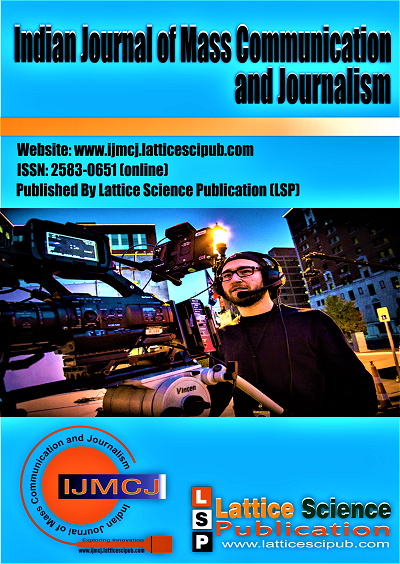The Aristotelian Rhetorical Theory: A Framework for Analyzing Pakistani Beauty Products Advertising
Main Article Content
Abstract
Advertising is one of the most basic forms of communication through media. Persuasion is one of the primary purposes of advertising. Customers are persuaded to buy products by advertising using different persuasive techniques. Both men and women increasingly rely on beauty products to look beautiful and have attractive spouses. Advertisements use rhetorical devices to persuade their viewers. Advertisements use language to achieve the purpose of persuasion. This paper analyzes advertising language considering Aristotle’s rhetorical theory. The three primary persuasive means are logos (logical appeal), pathos (emotional appeal), and ethos (ethical appeal). We examined these three methods in this paper in terms of how they are used to persuade consumers, and how they are perceived by them. In order to determine how Pakistani media utilizes Aristotle’s three means of persuasion in television advertisements, researchers studied beauty advertisementsin Pakistani media forthree months. There is a great deal of emphasis placed on persuasion in Pakistani advertising. Although Aristotle’s rhetoric theory was presented over 2000 years ago, it has proven to be highly effective in persuasion today.
Downloads
Article Details

This work is licensed under a Creative Commons Attribution-NonCommercial-NoDerivatives 4.0 International License.
How to Cite
References
Adeyeye, P. A. (2011). The Association between Advertising and Sales Volume: A Case Study of Nigerian Bottling Company Plc. Journal of
Emerging Trends in Economics and Management Sciences.
Ahmed, S. & Ashfaq, A. (2013). Imapct of advertising on consumer buying behavoiur through persuasiveness, band image and celebrity
endorsement. Global Media Journal, 6(2).
Ahmad, S. &. (2013). Impact of Advertising on Consumers' buying behavior through Persuasiveness, Brand Image, and Celebrity
endorsement. Global Media journal.
Bitzer, L. F. (1968). The Rhetorical Situation. Penn State University Press.
Connors, E. P. (1999). Classical Rhetoric for the Modern Student. New York: Oxford UP.
Janda, H.-Y. H. (2009). The effects of advertising spending on brand loyalty in services. European Journal of Marketing.
Janda, B. ; Stochmal, A. ; Montoro, P. ; Piacente, S. ; Oleszek, W., 2009. Phenolics in aerial parts of Persian clover Trifolium resupinatum.
Natural Products Communications, 4 (12): 1661-1664 [CrossRef]
John D Ramage, J. B. (2016). Writing Arguments: A Rhetoric with Readings. Pearson Education, Inc.
Kenny, D. A., Kashy, D. A., & Bolger, N. (1998).Data analysis in social
psychology. In D. Gilbert, S. Fiske, & G. Lindzey(Eds.), The handbook of social psychology (Vol. 1, 4thed., pp. 233–265). Boston, MA:
McGraw-Hill.
K. VenkateswaraRaju, &. S. (2016). An Empirical Study on the Impact of Advertising on Buying Behaviour.
K. VenkateswaraRaju, S. B. (2016). An Empirical Study on the Impact of Advertising on Buying Behaviour.
Khaniwale, M. (2015). Consumer Buying Behavior. International journal of innovation scientific research.
Kumar, P. (2002). Concept of Beauty in India. International Journal of Cosmetic Surgery and Aesthetic Dermatology, Vol.4, pp. 261- 264.
[CrossRef]
Kurup, H. K. (2014). Effectiveness of Television Advertisement on Purchase Intention. International Journal of Innovative Research in
Science,Engineering and Technology.
Sicilia, E. D.-B. (2010). Revitalising brands through communication messages: The role of brand familiarity. European Journal of
Marketing.





